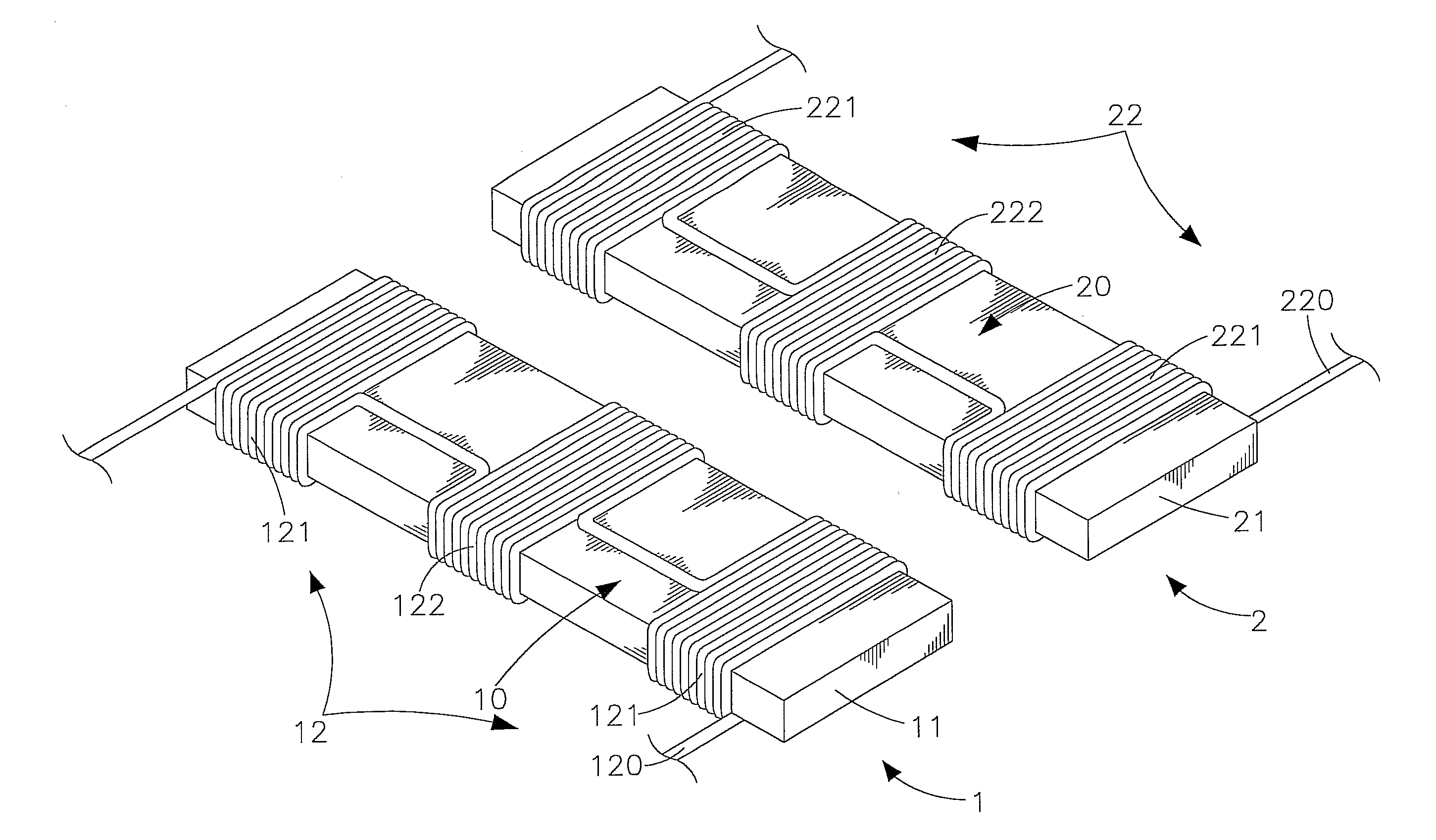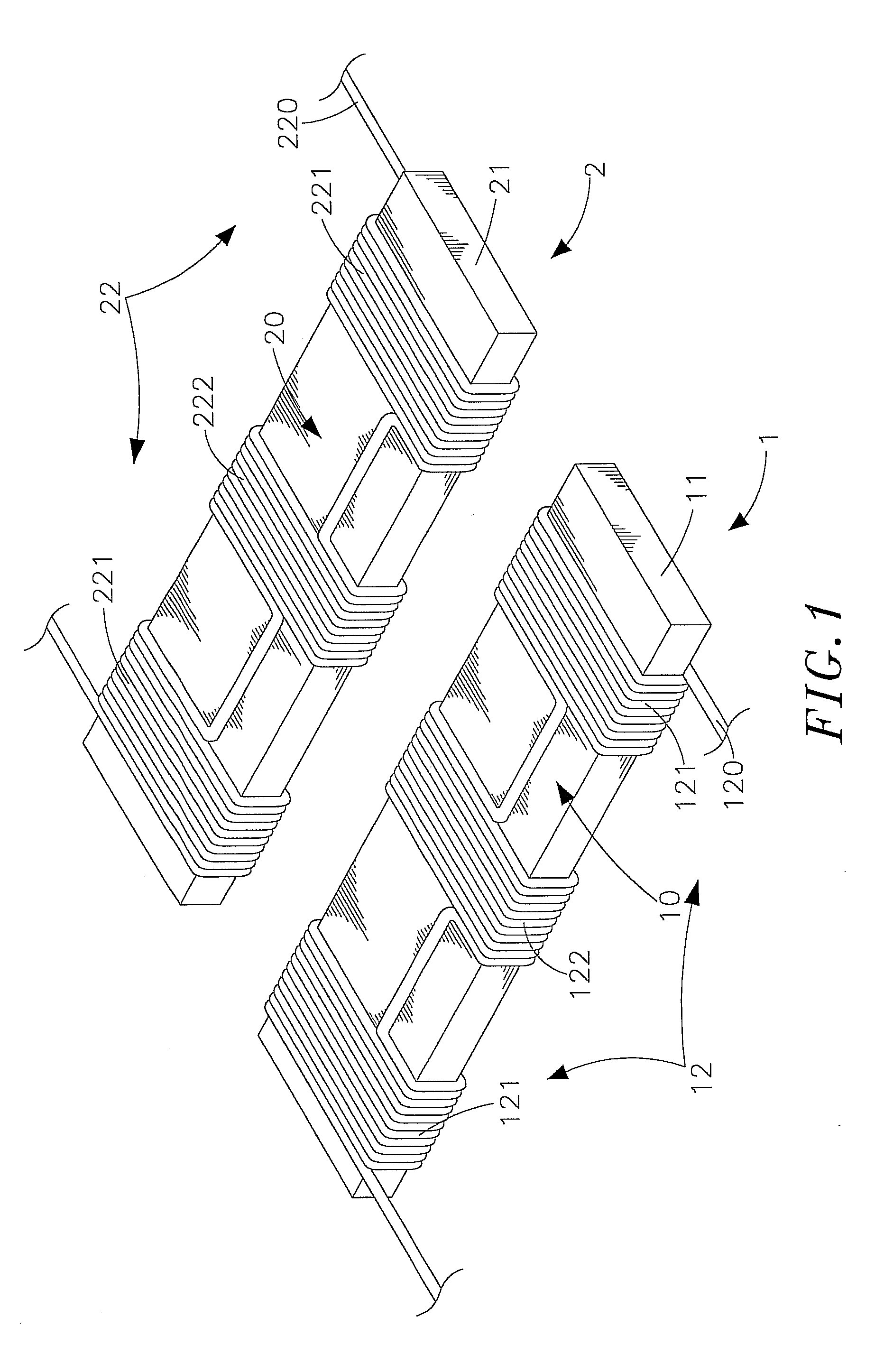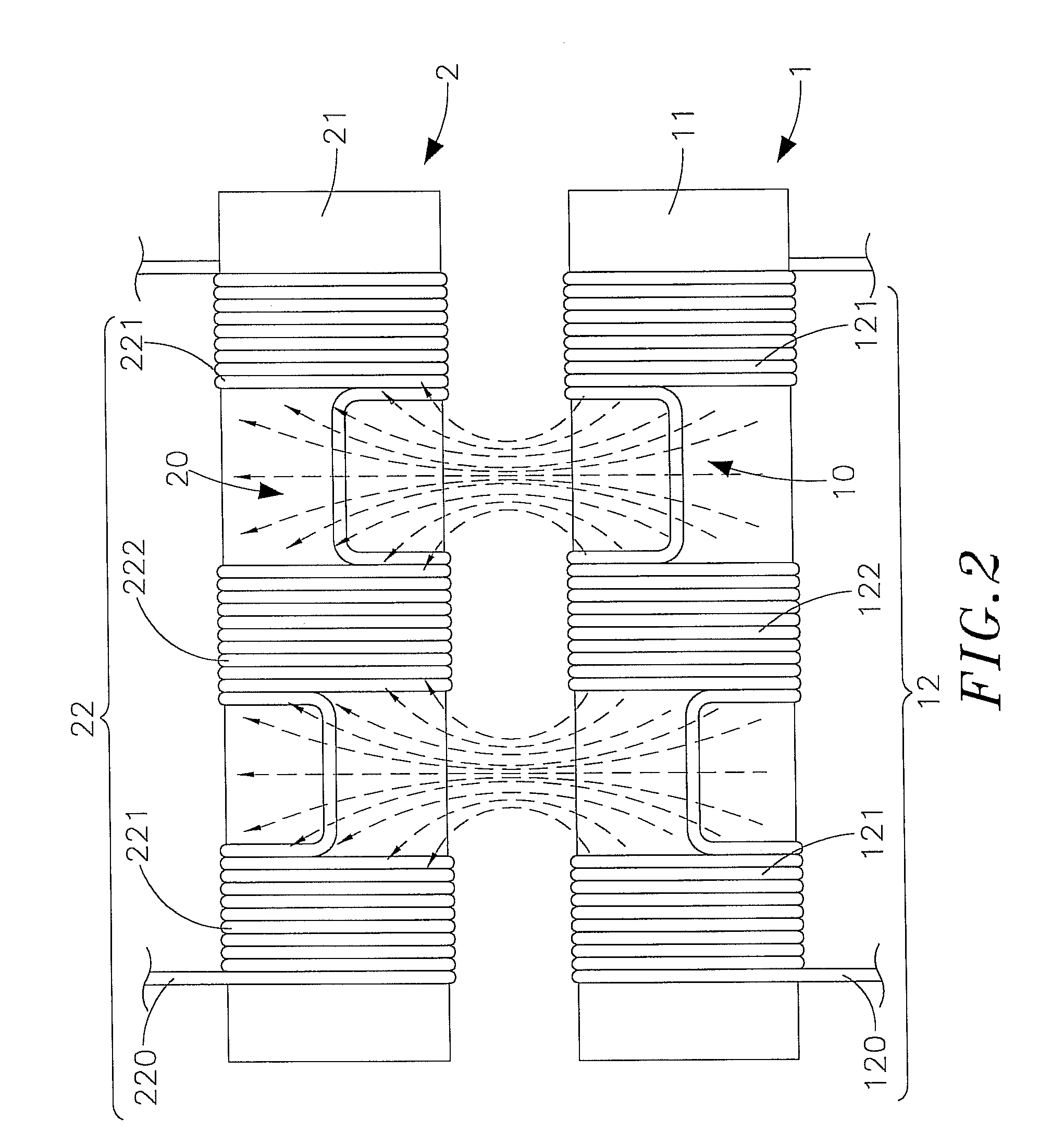Wireless charging coil structure in electronic devices
a charging coil and electronic device technology, applied in the direction of transformers, inductances, transportation and packaging, etc., can solve the problems of inconvenient wire placement, large space occupation, and significant increase in purchase costs, so as to improve overall power transmission stability, prevent electromagnetic emissions, and high permeability properties
- Summary
- Abstract
- Description
- Claims
- Application Information
AI Technical Summary
Benefits of technology
Problems solved by technology
Method used
Image
Examples
Embodiment Construction
[0026]To achieve the aforesaid objects and functions as well as the techniques adopted in the present invention and its fabrication, examples of the preferred embodiments of the present invention are given below to illustrate features and functions of the present invention in detail by referring to the accompanying drawings.
[0027]Refer to FIGS. 1, 2, 3 and 4, which are respectively a three-dimensional appearance drawing and a schematic drawing of electromagnetic induction according to the present invention, and three-dimensional appearance drawings according to one and another preferred embodiment of the present invention. As shown clearly in these figures, the present invention comprises a power sourcing (PS) coil module 1 and a power receiving (PR) coil module 2 (their major components and features will be illustrated in following paragraphs), wherein;
[0028]The PS coil module 1 contains a magnetic conductor 11 in the shape of a long bar and an induction coil 12, and an insulated w...
PUM
 Login to View More
Login to View More Abstract
Description
Claims
Application Information
 Login to View More
Login to View More - R&D
- Intellectual Property
- Life Sciences
- Materials
- Tech Scout
- Unparalleled Data Quality
- Higher Quality Content
- 60% Fewer Hallucinations
Browse by: Latest US Patents, China's latest patents, Technical Efficacy Thesaurus, Application Domain, Technology Topic, Popular Technical Reports.
© 2025 PatSnap. All rights reserved.Legal|Privacy policy|Modern Slavery Act Transparency Statement|Sitemap|About US| Contact US: help@patsnap.com



